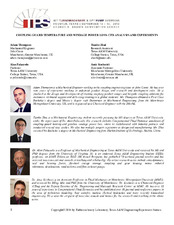| dc.description.abstract | High temperatures inside coupling guards can cause machinery down time and loss of revenue. As a result, many industries invest significant time and effort trying to reduce heat generation. Windage flanges are a standard feature on high performance couplings with the purpose of reducing heat generation within guards. However, previous testing and Computational Fluid Dynamic (CFD) simulation carried out by Pennington and Meck (2012) have cast doubt on the effectiveness of this feature. The forthcoming fifth edition of API 671 is expected to reduce the maximum allowable guard temperature from 160°F (70°C) to 140°F (60°C), to reduce the risk of irreversible surface contact burns. In order to comply with the API requirement, it is important to understand how features such as windage flanges and radial guard clearance affect heat generation. CFD analysis and physical testing are presented in this paper. Improvements to the test configuration setup have been made to achieve increased coupling surface speeds of 175m/s (compared to 123m/s in previous testing by Pennington and Meck (2012)), and simplified to isolate the effects of the windage flange. This paper investigates the effectiveness of windage flanges, as well as the effect of guard radial clearance on heat generation inside coupling guards, and resultant coupling guard temperature, at much higher speeds than in previous studies. In total, six test configurations were simulated, consisting of two test couplings (with and without windage features) tested with three different sized coupling guards, creating variable radial clearances. CFD analysis results conclude that the windage flange features are ineffective in reducing heat generation inside the guard, and coupling guards with a larger radial clearance result in lower temperatures inside the guard. However, this approach is less effective above a guard radial clearance of 40mm, after which the windage flange has little effect on the temperature within the coupling guard. In addition, temperature results from the validated CFD model were found to be within 4 percent of the physical experimental data. | en |


